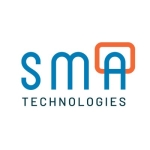What is our primary use case?
I've worked on many use cases for UiPath, primarily automation use cases, but the most recent one was for the HTS sector.
The customer was inquiring about payments, whether the payment was fully paid, partially paid, or whether there was an outstanding balance or payment discrepancy.
It was for a US client, and based on some validations, checks, and settings, I needed to identify if the payment was on time, delayed, or never paid. I had to commit to determining the information or data for my customer, which included many validation business rules. I had to consider the checkpoints before replying to the customer's query.
The query used to come through email, and I needed to extract the emails, identify what the query was for, and then go ahead and provide the solution.
How has it helped my organization?
Many new improvements in UiPath after 2018 have helped end users stay competitive in the market, such as document understanding and process mining. UiPath has also helped significantly in documenting scanned invoices and restructuring processes. UiPath is continually growing and updating, and that is a big help to organizations.
What is most valuable?
What I like best about UiPath is that it's undoubtedly the leader in the market.
I like that the solution makes life easier through its multiple features. It's easy to use UiPath through its Excel functionality, a basic application you need. UiPath also has many connectors available, so using the solution is easier.
I also found the document understanding feature of UiPath helpful in automating data from PDFs, whether it's to classify or extract information from documents. The document understanding feature also has many extractors, making data extraction easy to apply to the existing company processes, one of the best features of UiPath.
Compared to other RPA tools, such as Blue Prism and Power Automate, UiPath stands out in terms of the scalability of automation that you can do on the platform. UiPath is more reliable and has many actions available for almost every application, which is why the solution stands out.
Building automation using UiPath is simple, but it would still depend on the developer or designer. If you do not plan the process correctly, it will be messy. Regarding the actions for building automation, you can pull and drop into boxes, so it's easy.
My company used UiPath to automate processes dealing with a good cause, mainly giving people more free time to focus on learning new skills and growing professionally rather than spending all the time working on repetitive, mundane tasks. My company automated a process for the customer and delivered that to the customer.
UiPath enabled my company to implement end-to-end automation. Still, there may be a few requirements that would make the solution not feasible, for example, applications where it would be challenging to use UiPath, even with plug-ins.
The UiPath User Community is the biggest out of all communities by other platforms, and I found the community helpful. Many experts in the UiPath User Community are ready to help.
I've used UiPath Academy. Its courses helped me in understanding UiPath in detail. I started learning the solution from the academy itself. It is great because it covers all the basics and advanced topics. UiPath Academy is a one-stop solution for learning UiPath and its products, services, and offerings.
The solution has also helped in speeding up digital transformation.
Uipath has helped reduce human error in any process or task that is rule-based, which doesn't need any human interference or judgment. My company developed tasks on the platform and created code to handle specific situations or scenarios that completely took care of manual intervention or manual efforts plus, the deployment was easy, and the solution saved a lot of manual effort. UiPath reduced human error by up to ninety percent.
The solution helped free up employee time by up to forty percent after the automation by reducing the need for employees to work on repetitive tasks so employees could focus on other, more challenging tasks, including learning new skills.
What needs improvement?
One area for improvement in UiPath is that the orientation could be better.
Debugging also needs improvement because I need to do it from scratch whenever I have to debug a code. I have to run the entire code from the start and then check the pointers. If a specific action can be developed in UiPath, instead of running the code from the beginning, it would allow you to debug the code from the point that needs debugging, saving a significant amount of time.
My company has tested the AI functionality of UiPath, and for complex processes, it takes a lot of time to develop the processes from a development point. When a process is complex, it depends on the end users or developers on how to break the requirement into small pieces. Suppose you do not break it into small pieces and create a single push out of it. In that case, it will become a lengthy code inside UiPath Studio, making maintaining and monitoring that code difficult inside UiPath Studio. Locating the error or actual information would also take more work, so UiPath could be challenging to use in complex process automation.
Pricing for UiPath also needs improvement as it becomes expensive in large-scale implementations.
For how long have I used the solution?
I started working with UiPath in 2018, so from that time, it's been five years of working with the platform.
What do I think about the stability of the solution?
What do I think about the scalability of the solution?
UiPath is a scalable tool.
How are customer service and support?
I found UiPath Support good.
UiPath consultants provide good support and are readily available via email.
It takes about ten to twelve hours to receive a response from UiPath Support.
I'd rate support as eight out of ten.
How would you rate customer service and support?
Which solution did I use previously and why did I switch?
My company used Blue Prism before UiPath. I work for a service-based company, with clients choosing the tools based on priorities. UiPath was cheaper than Blue Prism, but when you use it for a large-scale RPA implementation where you deploy hundreds of robots, UiPath becomes more expensive than Blue Prism. However, development on UiPath was significantly faster and more reliable compared to Blue Prism. UiPath also has a larger community offering support versus Blue Prism and even has free training on UiPath Academy. UiPath also offered a free trial, which Blue Prism didn't offer. These are the reasons for switching to UiPath.
How was the initial setup?
Setting up the UiPath infrastructure was a little tricky, but the deployment was much easier. It usually takes one month to complete the deployment if the process is simple, but it could take up to three months for a complex process. Compared to other tools, the deployment and development of UiPath was faster.
What was our ROI?
In terms of manual efforts, realizing the benefits of UiPath was immediate, but for the financial benefits or ROI, it took some time, as the solution has a huge cost. It required you to purchase the UiPath Studio, Robot, and Architectural licenses. You also have to pay for the development costs, so the monetary benefits took time to reflect in the cash flow.
My company did notice between sixty to seventy percent ROI from UiPath, which was calculated around the number of FTEs, mainly how many FTEs were released from a specific task. For example, there was a big project with sixteen FTEs released from a repetitive task.
What's my experience with pricing, setup cost, and licensing?
When there's a massive deployment of robots, pricing for UiPath becomes costly, as you must purchase different licenses for UiPath Studio, Orchestrator, etc. I noticed that it would solely depend on how service-based companies negotiate with UiPath and that each client could have a pricing disparity. A client with a more significant implementation could get more discount, pricing-wise.
Which other solutions did I evaluate?
I had the chance to work with Blue Prism and Power Automate.
What other advice do I have?
UiPath does not require extensive or complex application upgrades and support, at least not for every application. Sometimes, support is needed depending on the project or application, but the chance of it would be very slim.
UiPath was deployed on-premises. In terms of environments or locations, the solution was deployed in three different environments: in the Studio, Orchestrator, and Testing.
The number of users of the solution varies per project, but the maximum number of users I've worked with on a single project is about thirteen or fourteen.
My company has worked with small, medium, and large enterprises using UiPath.
The solution doesn't require maintenance. It just requires license renewal.
My rating for UiPath is seven out of ten. I'd make it a ten if UiPath improves the appearance of the Studio. Its debugging process could also be improved, as it's currently complex. It could be easier.
My company is a UiPath partner.
Which deployment model are you using for this solution?
On-premises
Disclosure: PeerSpot contacted the reviewer to collect the review and to validate authenticity. The reviewer was referred by the vendor, but the review is not subject to editing or approval by the vendor. The reviewer's company has a business relationship with this vendor other than being a customer: Partner























